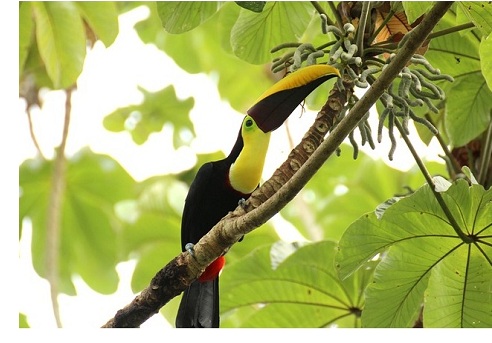Clues from the Rainforest
August 28, 2017
 Dr. Randy Thompson, like a real-life Indiana Jones, has studied pharaohs from the tombs of Egyptian pyramids, and ancient mummies from the Inca empire in Peru. His latest scientific adventure has taken him to the depths of the Amazon rainforest to study the Tsimane people.
Dr. Randy Thompson, like a real-life Indiana Jones, has studied pharaohs from the tombs of Egyptian pyramids, and ancient mummies from the Inca empire in Peru. His latest scientific adventure has taken him to the depths of the Amazon rainforest to study the Tsimane people.
The Tsimane are a tribe of hunter-gatherers who continue to live a native lifestyle. They are isolated from contemporary society and lack modern technologies, such as electricity, running water and waste management.
The Tsimane eat only unprocessed foods. They fish, hunt and forage plant and animal foods from the forests and rivers.
World’s Healthiest Hearts
Dr. Thompson presented these findings at this year’s American College of Cardiology meeting, and published the study in the Lancet. This study was widely reported in major news media outlets around the world.
The researchers used a CardioScan (CT) machine to see if the Tsimane adults had any plaque in their coronary arteries. Of the entire group of 705 people, 85 percent had a coronary artery calcium score (CACS) of 0 (no coronary calcification). Only 3 percent of the Tsimane group had anything more than mild coronary calcification. These natives had the lowest amount of coronary plaque ever recorded in a population; lower even than among Japanese women.
These results indicate that coronary atherosclerosis is a highly preventable disease. The Tsimane generally have lifelong normal blood pressure, with excellent cholesterol and blood sugar levels, normal weight, rare tobacco use, and they stay very physically active throughout life.
Take-Home Messages
Although vegetarian and vegan diets are commonly perceived as heart healthy, the Tsimane, with the lowest prevalence of coronary disease ever documented, consume about the same percentage of calories from animal protein sources as does the average U.S. resident. However, the Tsimane animal food sources are exclusively wild game and fish, which are low in saturated fats, but rich in cardio-protective omega-3 fats. In fact, the Tsimane, when compared to U.S. residents, have omega-3 levels that are three-fold higher. Importantly, the Tsimane consume virtually no added sugars or refined grains - staples of standard American diet.
The Tsimane walk about 15,000 to 17,000 steps per day (about seven to eight miles), generally doing light-to-moderate outdoor physical activities; they sit for just 10 percent of their waking hours.
In contrast, a typical adult in the U.S. takes about 5,000 steps per day, and sits for 60 percent of their waking hours. The Tsimane live in small villages usually consisting of 50 to 150 people, and sustain lifelong close relationships with their immediate and extended family members, as well as their neighbors.
We homo sapiens remain genetically adapted to thrive as physically active, socially connected omnivores. So, while it may not be doable to precisely follow the diet and lifestyle of humans living in the wild, there are practical lessons for longevity and robust cardiovascular health we can learn from the Tsimane:
-
Stand up, get outside and walk every chance you get.
-
Eat plenty of unprocessed plant foods, such as fresh produce, legumes and nuts.
-
Choose wild-caught fish, with only modest amounts of lean fresh meat.
-
Avoid tobacco and processed foods, especially added sugars and refined grains.
-
And most importantly, stay close with your tribe.
In Good Health,
James O'Keefe, MD
Picture Credit: Pixabay
 Dr. Randy Thompson, like a real-life Indiana Jones, has studied pharaohs from the tombs of Egyptian pyramids, and ancient mummies from the Inca empire in Peru. His latest scientific adventure has taken him to the depths of the Amazon rainforest to study the Tsimane people.
Dr. Randy Thompson, like a real-life Indiana Jones, has studied pharaohs from the tombs of Egyptian pyramids, and ancient mummies from the Inca empire in Peru. His latest scientific adventure has taken him to the depths of the Amazon rainforest to study the Tsimane people.



